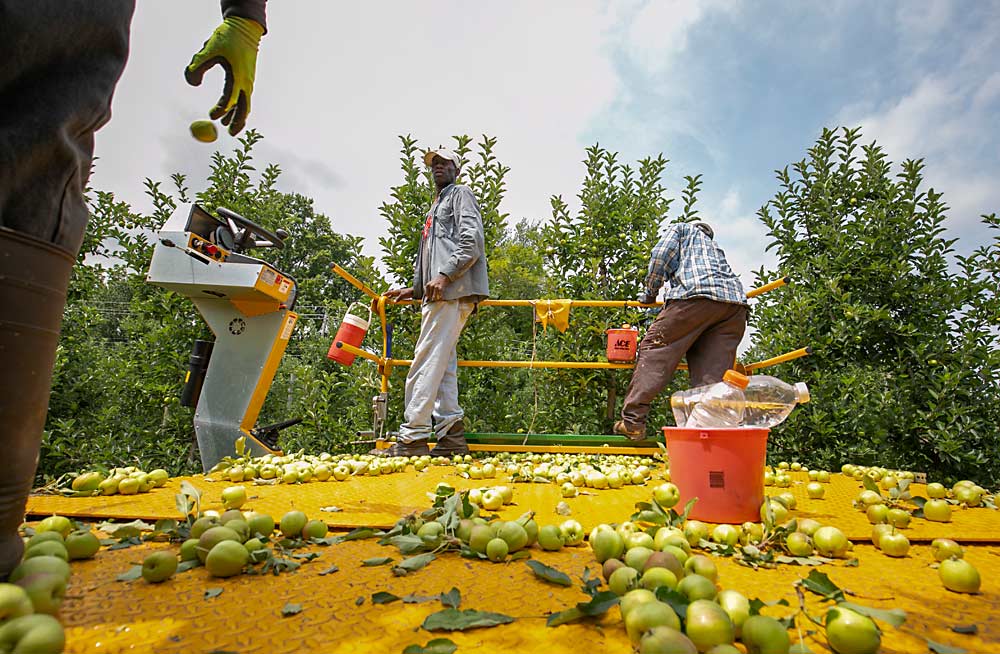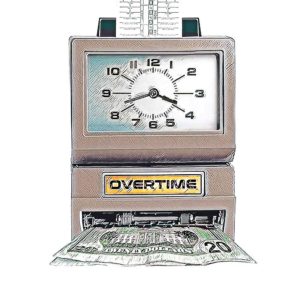
As their labor costs continue to mount, New York fruit growers are going through their operations with a fine-toothed comb, refining or removing anything that’s unprofitable — whether it’s a payroll practice or an orchard — while renewing their focus on high-value varieties and blocks.
The state’s minimum wage is gradually rising to $15 an hour (it’s already reached $15 in New York City and surrounding counties), and its Adverse Effect Wage Rate — the wage growers must pay federal H-2A guest workers — has reached $14.99 an hour. But the biggest blow came in 2020, when state government mandated that all farm laborers be paid overtime, at 1.5 times the normal rate, for any work they perform in excess of 60 hours per week and for any work they perform on a designated weekly day of rest.
Overtime exemptions for agriculture, once commonplace, have recently been rescinded in California, where the 40-hour threshold will take effect in 2022, and by the Washington Supreme Court in a late-2020 decision that sent state lawmakers scrambling to provide growers more certainty in the 2021 legislative session.
In New York, the new overtime rules and minimum wage increases represent the state’s “biggest agricultural policy changes in the last 100 years,” said Jeff Williams, New York Farm Bureau’s public policy director.
Growers and other industry stakeholders interviewed by Good Fruit Grower said the 60-hour weekly overtime threshold is challenging but doesn’t constitute an existential crisis for New York fruit growers. The big worry is that the wage board created by the new law will recommend lowering the overtime threshold to 50 or even 40 hours per week. If that happens, New York growers might choose to abandon fruit altogether.
“For the first time in my career, I’ve talked to farmers who’ve said they might move their operations to another state,” Williams said.
In December, the wage board decided not to lower the overtime threshold for 2021, but it was “touch and go until the last minute,” Williams said. The board will reconvene in November to make a decision about 2022.
In 2017, when the idea of overtime changes first surfaced in New York, Cornell Cooperative Extension studied projected labor cost increases for four apple farms. In the most extreme example, the effective minimum wage went up 3.6 percent in a 60-hour work week, 9.8 percent in a 50-hour week and 18.7 percent in a 40-hour week. Cornell is conducting more studies this year to further assess the impact of the overtime law.
Mark Wiltberger, CCE business management specialist, said most New York growers are responding to the new overtime threshold by managing employee hours to minimize overtime pay rates. One grower he spoke with shared that she told her employees their work weeks will be limited to a 60-hour maximum, versus the unlimited hours they could work in the past.
“Her employee reaction was disappointment, as many domestic and H-2A field workers usually wish to work as many hours as possible,” he said in an email interview.
Paul Baker, executive director of the New York State Horticultural Society, said the labor situation is forcing New York growers to trim the fat and put their farms in a stronger economic position. They’re doing a lot of “pencil pushing” right now, scrutinizing everything that makes them money and everything that costs them money.
Brett Kast, co-owner of Kast Farms in Western New York, continues to remove unprofitable blocks and varieties and replace them with profitable plantings. He’s hiring more H-2A workers, to make sure everybody’s hours stay under 60 per week. He also uses payroll software from Hectre, a New Zealand company with offices in New York and Washington, to keep track of hours with greater accuracy.
“We can’t let things slide through the cracks anymore,” Kast said.
Similarly, Western New York fruit growers Alison and Tom DeMarree now monitor worker hours with software from Agri-Trak, a New York company. Their full-time workers check in and out using an Agri-Trak app on their phones. The DeMarrees have lengthened their worker lunch breaks from 30 minutes to 45 minutes and pay closer attention to the exact amount of labor required for jobs such as putting down and pulling up reflective fabric. They’re also writing an employee handbook, creating more detailed job descriptions and putting more emphasis on planning and training, Alison DeMarree said.
“The scarcity of people who want to work on a farm and all the new regulations are making us up our game,” she said. “This past year has been like no other and is making us examine our values and look at how we do everything on the farm.” •
—by Matt Milkovich







Leave A Comment